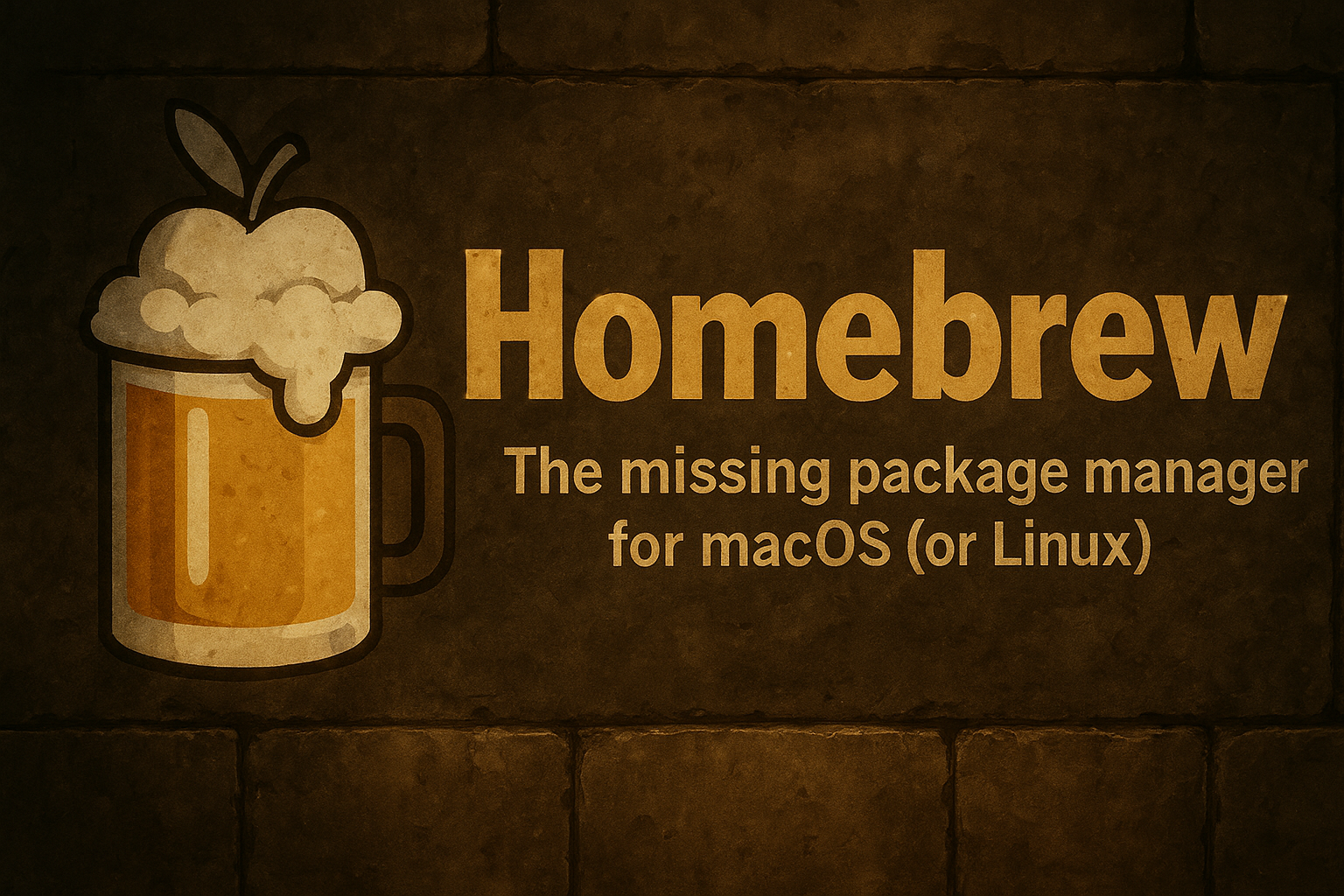
Homebrew is a popular package manager for macOS that simplifies the installation, updating, and management of software packages. Whether you’re a developer, system administrator, or just a tech enthusiast, Homebrew can help you manage your software efficiently. This guide will walk you through some of the most useful Homebrew commands and tips.
Installing Homebrew
Before you can use Homebrew, you need to install it. Open your terminal and run the following command:
/bin/bash -c "$(curl -fsSL https://raw.githubusercontent.com/Homebrew/install/HEAD/install.sh)"Follow the on-screen instructions to complete the installation.
Basic Commands
Listing Installed Packages
To list all the packages installed via Homebrew, use the following command:
brew listThis will show a list of all installed formulae (command-line tools) and casks (GUI applications).
If you want to list only the casks, use:
brew list --caskListing Top-Level Packages
Homebrew installs dependencies automatically when you install a package. To list only the top-level packages (those you installed manually, not dependencies), use:
brew leavesTo include descriptions of these packages, you can use:
brew leaves | xargs brew desc --eval-allListing Installed Packages with Versions
If you want to see the versions of the installed packages, use:
brew list --versionsFor casks, you can use:
brew list --cask --versionsViewing Dependency Trees
To see the dependency tree of all installed packages, use:
brew deps --tree --installedThis will show you which packages depend on others, helping you understand the relationships between your installed software.
Managing Packages
Installing Packages
To install a package, use the brew install command followed by the package name:
brew install <package-name>For example, to install wget, you would run:
brew install wgetUpdating Packages
To update all installed packages to their latest versions, use:
brew update
brew upgradeIf you only want to see which packages are outdated, use:
brew outdatedFor casks, use:
brew outdated --caskUninstalling Packages
To uninstall a package, use the brew uninstall command:
brew uninstall <package-name>For example, to uninstall wget, you would run:
brew uninstall wgetAdvanced Usage
Using Brewfile for Reproducible Setups
Homebrew allows you to create a Brewfile that lists all your installed packages. This is useful for replicating your setup on another machine.
To create a Brewfile from your currently installed packages, use:
brew bundle dumpThis will generate a Brewfile in the current directory. You can then edit this file if needed.
To install all the packages listed in a Brewfile, use:
brew bundleMigrating Packages to Another Machine
If you want to migrate your Homebrew setup to another machine, you can use the Brewfile approach. First, create a Brewfile on your current machine:
brew bundle dumpThen, transfer the Brewfile to the new machine and run:
brew bundleThis will install all the packages listed in the Brewfile on the new machine.
Cleaning Up Unused Packages
Homebrew can help you clean up unused packages and free up disk space. To remove unused packages, use:
brew autoremoveTo clean up old versions of installed packages, use:
brew cleanupHomebrew is a powerful tool that simplifies package management on macOS. Whether you’re installing new software, updating existing packages, or managing dependencies, Homebrew provides a straightforward and efficient way to handle it all. By mastering the commands and techniques outlined in this guide, you’ll be well-equipped to manage your macOS software with ease.
For more information, you can always refer to the official Homebrew documentation by running:
brew helpHappy brewing! 🍺

